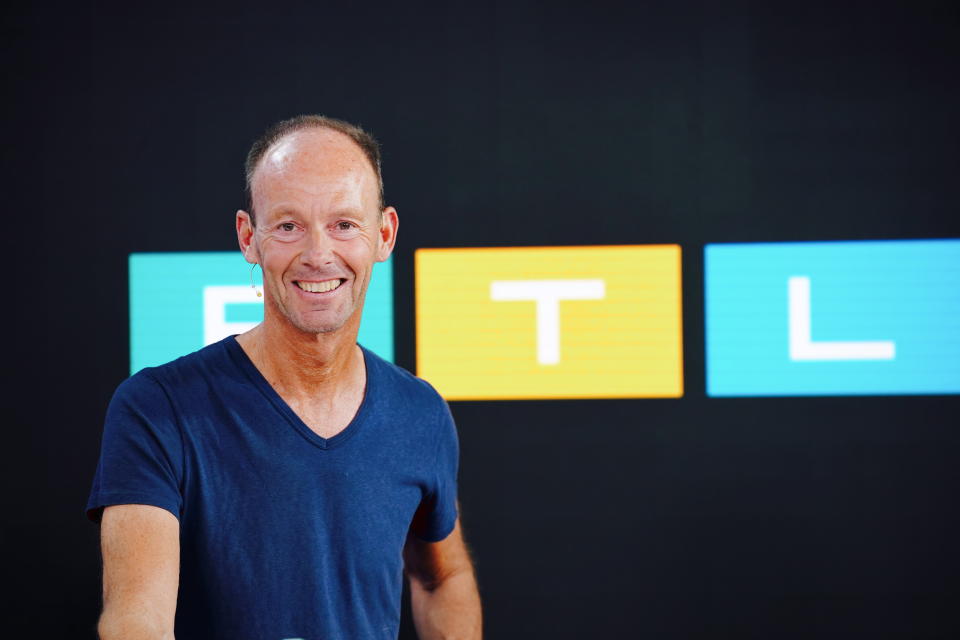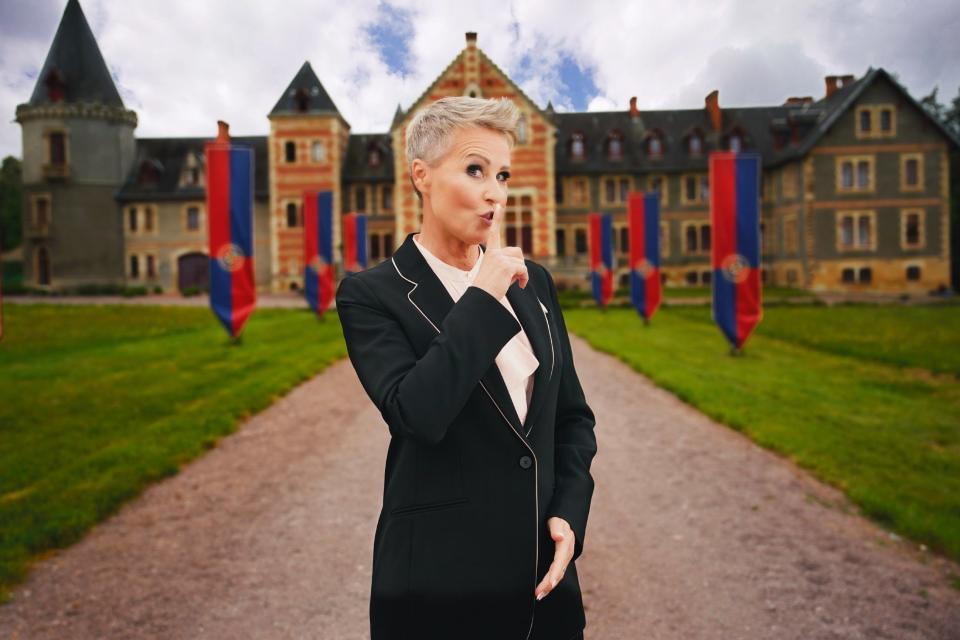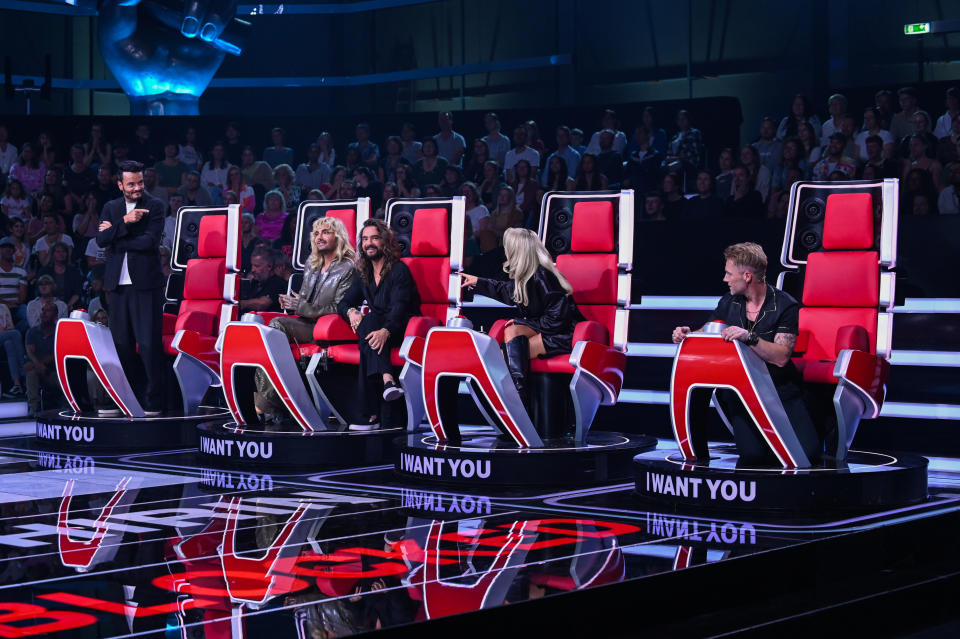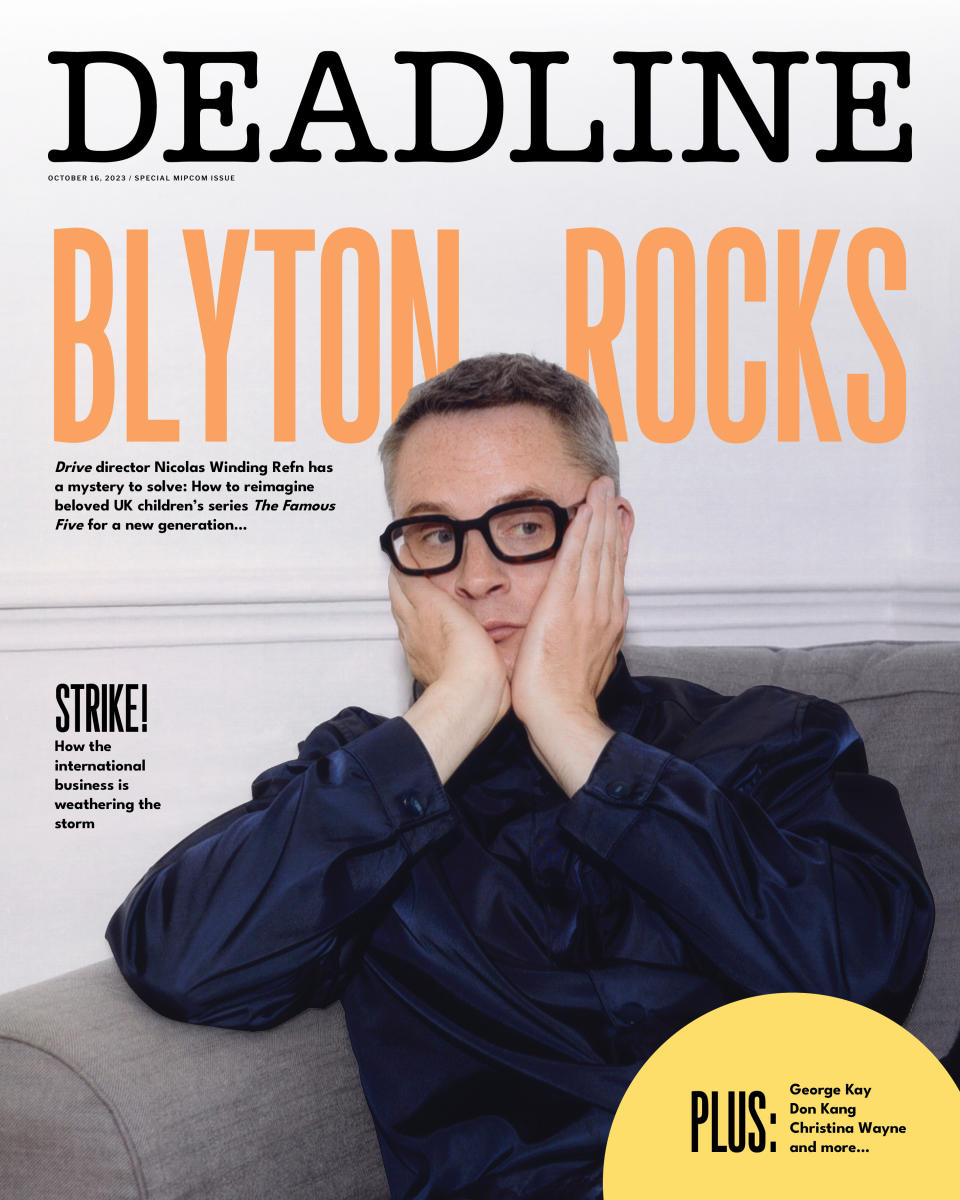Europe’s Commercial Giants: How Leading Networks Finally Woke Up To Streaming… But Is It Too Late? – Mipcom Cannes Special

When ITV switched on its new streaming service ITVX in December 2022, the initial promise was to deliver 10,000 hours of free content, including originals such as Damian Lewis drama A Spy Among Friends, which the commercial broadcaster hope would establish the platform as “the UK’s freshest streaming service.”
It certainly marked a big step up from its previous streaming incarnation, ITV Hub, which mainly served as a catch-up TV service rather than a content destination. But still, industry onlookers were sceptical.
More from Deadline
In Europe, the wider narrative has been that the continent’s big commercial beasts have focused far too many resources on retaining their aging linear audiences and, as a result, had left it too late to catch up with the global streamers in their local market. They even trailed public broadcaster services such as Britain’s BBC iPlayer and Italy’s RaiPlay by a distance, according to many analysts and market watchers.
“My view is broadcasters initially underestimated the impact of the streamers and there’s been a hesitation to shift to digital, which has put them at a disadvantage,” says Neil Anderson, senior analyst at Ampere Analysis.
Francois Godard, senior media and telecoms analyst at Enders Analysis, puts it another way: “European TV had it too good for too long.”
However, ITVX’s startling numbers in the 10 months that followed its launch may prove to be a turning point in the story. In August, ITV trumpeted 2 billion views and was named Best On-Demand Service at the Edinburgh TV Awards. ITV’s best total for a full year prior was 1.9 billion for 12 months in 2022. The metrics were up significantly. Monthly active users grew 29%, while 93% more ‘light’ users — a lucrative group for advertisers — had used ITVX in the first six months of 2023.
“The numbers don’t lie, and they are really good in all metrics,” Radcliffe says. “TV is on the one hand very complicated and the other it is not: we want people to watch longer.”
Similar stories have been playing out across Europe. Amid a brutal advertising downturn that’s whacked turnover and earnings at all major media companies, RTL’s streaming revenue was up 17% and ProSiebenSat.1 has placed streamer Joyn at the center of its operation as part of a massive restructuring of its business. This isn’t to paint an overly positive picture — virtually every major European commercial TV operation’s share price is considerably down on pre-Covid trading — but there’s a sense companies are coming to grips with the issues, and specifically how streaming will dictate their futures.
“We’ve seen a change of pace recently with ITVX and RTL+ in Germany,” Enders’ Godard. says “ITVX is releasing more content online before the linear channel. It is conceived as a destination rather than ITV Hub, which was catch up.”
The question now is really whether Europe’s big dogs took too long to respond. Huge falls in revenues have led to redundancies at many companies, with ProSieben shedding 400 staff in one instance. Meanwhile, many of the global streamers are still investing into their European markets to consolidate their subscriptions, despite their well-documented struggles of the past 12 months.
When probed about the step-change in digital approaches, senior network execs provide myriad reasons — some necessity, others future-looking — but Henrik Pabst, Chairman of Seven.One Entertainment Group and CEO of Seven.One Studios, puts its more simply: “We used to be frightened of cannibalizing our content, now we are not.”
For ITV, that has meant guaranteeing long, exclusive debut windows and brand extensions on ITVX for many shows, while ProSiebenSat.1 has focused on developing formats that are “optimized” for both streaming and linear, according to Pabst. For example, ITVX will run a continuous live feed for its upcoming Big Brother reboot, while episodes of The Voice launch behind the paywall on ProSieben’s Joyn seven days before their linear launch, which still garner millions of overnight views, and then join catch-up services for free.
“The answer for us is to really concentrate on catching broad audiences who like our program brands, which are extended into digital,” Pabst says. “This interplay hasn’t been seen at streamers.”

The goal is to differentiate the product from current global streaming models by using AVOD services to reach broader audiences and ultimately attract advertisers, while also offering subscription options for those who want earlier access. “Broadcasters do have a chance to capitalize on subscription fatigue,” says Ampere’s Anderson.
The challenge then becomes one of balance — investing in addressable TV ad solutions that build revenues at digital services, while still focusing on the large, though dwindling, audiences on the flagship linear channels.
“No doubt, there are long-term structural shifts in video viewing,” says RTL CEO Thomas Rabe, who is also Chairman and CEO of the Luxembourg-based broadcaster’s parent, Bertelsmann. “The share of linear TV viewing is still significantly higher in our key European countries compared to the U.S., but we face similar trends: decreasing usage of linear TV and increasing usage of streaming and online video.”
RTL’s answer is to consolidate its huge reach in countries such as Germany and the Netherlands and invest in new advertising and data tools to better monetize.
However, there isn’t a unified approach to the future amongst Europe’s commercial players. Many see local dominance through domestic consolidation as paramount, while the likes of MediaForEurope, which owns Mediaset and a 28.7%% stake in ProSiebenSat.1, call for more cross-border collaboration.
Encouragingly, older viewers are finally beginning to move to streaming platforms, perhaps encouraged to experiment by the boredom of lockdowns during Covid. Ofcom’s Media Nations 2023 report revealed that for the first time a “significant” decline in daily linear TV viewing among Britain’s over-65s, down 8% year-on-year and 6%on pre-pandemic levels. Meanwhile, the proportion of the demo using streaming services grew across the board. “That’s a big opportunity,” says ITV’s Radcliffe.
The bigger picture
As Europe’s commercial networks come to grips with streaming, they are also wrestling with shape of their wider businesses. Analysts expect consolidation of one form or the other to follow over the coming decades, as scale becomes ever more decisive. Enders’ Godard says it’s a “trial-and-error environment” right now but adds he would be “reassured” if the thinking was “more collective.”
For example, Mediaset owner MediaForEurope has broadly favored cross-border consolidation — it owns leading broadcast channels in Italy and Spain and is the biggest shareholder in ProSiebenSat.1. With the passing of company founder Silvio Berlusconi this year, there are unknowns around how his children, Piers Silvio and Marina, will proceed after taking control of the media empire. Rumors of a company sale have been rubbished, while MediaForEurope recently took the shares it didn’t already own in Mediaset España, a near €800 million ($850 million) transaction.
Others have been much more focused at local level. RTL’s businesses remain hyper-focused on local consolidation but have found progress tough. Attempts to merge the company’s French network M6 with commercial market leader TF1 and RTL Nederland with Talpa Network in the Netherlands were stopped on anti-competition grounds by watchdogs.
“In both countries, the competition authorities blocked the transactions because they did not take into account the speed and extent of the changes in European media,” says RTL’s Rabe. “I still see these as missed opportunities — for us, but also the European media industry as a whole.”
Analysts broadly agree. “In the case with TF1-M6, regulators have seen it through a narrow prism of the TV advertising market, which doesn’t reflect the wider scale of the challenges on commercial broadcasters,” says Ampere’s Anderson. “The regulators have been tested in their ability to understand market dynamics, and they need to make their minds up how they want to support broadcasters.”
Broadly, regulators have been far more comfortable with pan-European consolidation. Comcast-owned Sky and France’s Canal+ have both built European pay-TV businesses and MediaForEurope now has two seats on the ProSieben board and has begun to collaborate more closely with the German company on advertising and tech over recent months. Its stake in ProSieben is now very close to the 30% that would automatically trigger a mandatory takeover bid. The Warner Bros.-Discovery deal was waved through by the EU at the end of 2021.
Content is key
As ITV, RTL and co reshape their futures, the role of content remains be central to their futures. ITV has invested heavily in ITV Studios. The production and program sales division recently posted half-year earnings of £1 billion ($1.2 billion) that outperformed the group’s Media & Entertainment division, which houses its linear networks, for the first time.
The Julian Bellamy-led division makes the network’s hit UK soaps, most of its local versions of Love Island and I’m a Celebrity… Get Me Out of Here!, and has a burgeoning global scripted arm that houses the likes of Line of Duty maker World Productions and Gomorrah producer Cattleya.

“For ITV, Studios has been a really big strategic advantage,” says Ampere’s Anderson.
RTL owns Fremantle and has set its production subsidiary the lofty target of €3 billion ($3.14 billion) in revenues by 2025 — one Rabe himself calls “ambitious.” It posted a turnover of €2.3 billion ($2.4 billion) in 2022, up 22%, and has spent heavily on companies such as The Elon Musk Show maker 72 Films, Normal People producer Element Pictures and Devils prodco Lux Vide during a sustained acquisitions spree that we estimated earlier in the year hit €250 million ($262 million).
“Content is the lifeblood of RTL Group,” Rabe says. “It drives audiences in broadcasting and streaming.” He adds that the company spends more than €2 billion ($2.1 billion) each year on content above and beyond Fremantle productions — it ordered the German version of The Traitors, known as Die Verräter from All3Media’s Tower Productions, for example.
In France, TF1 Group has followed a similar strategy. Its subsidiary, Newen Studios, has more than 50 labels, most of which are in France but are also based in the UK, Spain, Belgium, the Netherlands and the Middle East.
Meanwhile, ProSieben has taken a different approach. It sold its U.S. production assets to former Fox boss Peter Chernin, who used the acquisition as a propeller to form The North Road Company and refocused on its local production teams. The Red Arrow Studios moniker was dropped and in came Seven.One Studios, which now houses eight German production companies, sales arm Red Arrow Studios International, and producers in Israel, Denmark and UK (including Married at First Sight UK firm CPL Productions).
“We tried to be a true global production house but when ProSieben wanted to become the local market champion we had to be honest,” Pabst says. The rationale was that while its U.S. producers were making shows such as Love is Blind and Life After Death with Tyler Henry, their content didn’t fit on ProSieben services — and didn’t fit the business model.
He says the slimmed down group “has experts in every genre,” adding: “I’m confident that the group delivers what we need.”
If the post-Covid era marks the beginning of a truly digital-first future for Europe’s commercial networks, the next debate is who has made the right moves. Innovative TV advertising partnerships, investment in free-streaming propositions and M&A will all play their part, but Enders’ Godard says there is another existential question to answer: how they will remain prominent in a digital era.
“If you go into a digital world where everyone is one their own, you run the risk as ending up as an app like many others,” he says. “The European channels set the rules of the TV advertising market of today more or less, but they could lose control over this and end up on a Google or Amazon platform.”

Should Amazon channels, for example, become the dominant ‘EPG’ [electronic program guide] of the future, incumbent networks will “lose scale and risk being marginalized. I’m not sure they completely realize that,” Godard says.
Europe’s commercial network chiefs argue they’re more than aware of the challenges ahead.

“The media industry is amid a fundamental transformation,” says RTL’s Rabe. “This comes with significant challenges‚ but also huge opportunities. I encourage our teams to embrace creativity and entrepreneurship, and to take decisive action. We have the investment capacity to future-proof our business and seize opportunities in streaming, content production and advertising technology.”
ITV’s Radcliffe says: “We can’t influence the broader macro-economic picture, but we can continue to be a fantastic platform for advertisers. What marketeers and ad people want is to shift their business through advertising and ITV remains an incredibly effective platform. Our digital transformation has brought a lot of new business in — we attracted 400 new advertisers digitally in 2022.”
Radcliffe contends that it boils down to staying “relentlessly focused” on the streaming strategy and listening to what your advertisers have to say. “In an economic downturn, when marketing budgets are discretionary, being the biggest place in town with the scaled commercial audience becomes even more important.”
Best of Deadline
TV Cancellations Photo Gallery: Series Ending In 2023 & Beyond
Hollywood & Media Deaths In 2023: Photo Gallery & Obituaries
Sign up for Deadline's Newsletter. For the latest news, follow us on Facebook, Twitter, and Instagram.


